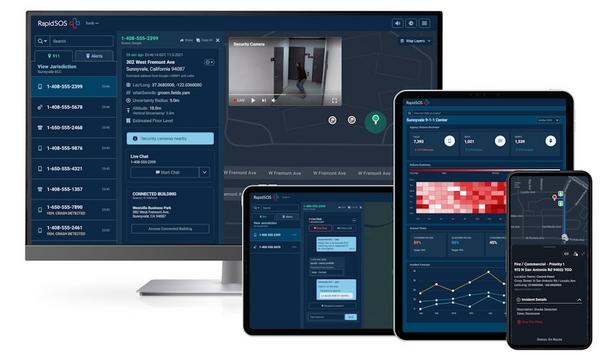When it comes to physical fitness, every fire department’s approach is different. Some have invested in a fitness initiative, others haven’t. Some struggle to create culture change and an environment where physical fitness is a priority and not an afterthought. Other departments don’t know where to begin, or they approach the issue of health and fitness randomly with approaches that may not be based on science.
Firefighters physical health
Worse, some departments embrace systems that are too strenuous or likely to cause injury. Using heavy weights can cause harm. Sometimes firefighters exercise beyond the point of fatigue. Basketball may be good exercise, but the risk of ankle sprains and other injuries outweighs the benefits.
Any exercise program should be science-based and should “engineer out” the likelihood of injury"
“Any exercise program should be science-based and should “engineer out” the likelihood of injury”, says Bryan Fass, Founder and President of Injury Prevention Systems and the Fit Responder. He works nationally with departments to reduce injuries and improve fitness for first responders.
Need for a fitness policy at fire stations
“Some departments have a ‘fitness policy’ that says firemen should work out whenever they can,” says Fass. “Others have no policy at all, and some have to deal with cities, command staff and unions – it’s hard to have a focused goal because everybody wants something different.”
Some departments have built a centrally located fitness facility that crews from multiple firehouses can use on a rotating basis. Others may simply have an arrangement with a local health club that is agreeable to a fire truck being parked out front.
 |
| A principal benefit of a physical fitness program is avoidance of on-the-job injuries |
Avoiding on-the-job physical injuries
A principal benefit of a physical fitness program is avoidance of on-the-job injuries. The number one physical affliction for firefighters and EMTs is low-back injury. Firefighters also suffer shoulder injuries from pulling; or knee injuries from tripping, stepping in a hole, or climbing in and out of a truck. Injuries also tend to be less severe – and to heal more quickly – among physically fit patients. Fit firefighters are less likely to suffer from heart attacks in a high-stress/high-heat environment.
Fitness also helps to offset fatigue. Research shows that a “fit but fatigued” firefighter will outperform, have less risk of injury and better cardiac health than an “unfit but fresh” firefighter in a high-stress/high-heat environment. In short, better fitness equates to better work capacity and fewer injuries.
Addressing wide fitness level disparities
When it comes to fitness, a concern is the wide disparity among fitness levels of firefighters
When it comes to fitness, a concern is the wide disparity among fitness levels of firefighters. There are young firefighters who are relatively fit working out side-by-side with an aging workforce that isn’t equipped for the same level of activity. In the middle are some motivated souls who are more health-conscious.
An approach that works for all three groups is to introduce activities with a low-risk-high-reward ratio. Regularly scheduled exercises should cater to the lowest-common-denominator participants. Exercise programs should be risk-averse.
Importance of physical fitness programs
A big need for fire departments is to have more structure in their physical fitness programs. “The need for structure is there, but every department is different,” says Fass.
In fact, a misconception about firefighter fitness is that they have to train all the time. Rather, a balanced approach works best. When scheduling exercise routines for each shift, different kinds of workouts should be scheduled about two days apart. One day might be high intensity; another might be a mobility/recovery workout; a third might be primal lifting, squats and deadlifts; and a fourth might be stability/mild cardio (core training). The light schedule assumes that more fitness-conscious firefighters would work out more strenuously on their own time.
 |
| A big need for fire departments is to have more structure in their physical fitness programs |
Incorporating high nutrition in firefighters’ diet
Some departments embrace the concepts of good nutrition and how they can impact everything from a firefighter’s fatigue to their ability to survive on the fire ground; others revolt and won’t even listen. There are geographical differences, too: The West Coast is more health-conscious than the Northwest or South.
Eliminating pain, increasing mobility and fighting fatigue are prerequisites for an exercise program
Eliminating pain, increasing mobility and fighting fatigue are prerequisites for an exercise program. Participants should be taught to self-treat pain in the 16 “trigger points” around the body using therapeutic tools, such as a foam roller or tennis ball. There are tools to target each area of pain. Adopting a “mobility program” involves stretching for greater flexibility and mobility. And combatting fatigue means ensuring that firefighters get enough sleep.
Incentives for fit firefighters
Fears for their job security may be an unspoken but real concern among firemen presented with a new fitness program: “Get fit, or else….” Fitness programs should allow plenty of time for participants to get back into shape,” says Fass.
Some departments offer incentives to employees who achieve better fitness, such as a cash award, gift card, or extra time off. Some offer incentives to do tests based on NFPA 1582, which outlines an occupational medical program to reduce risks and provide for the health, safety, and effectiveness of firefighters.








































